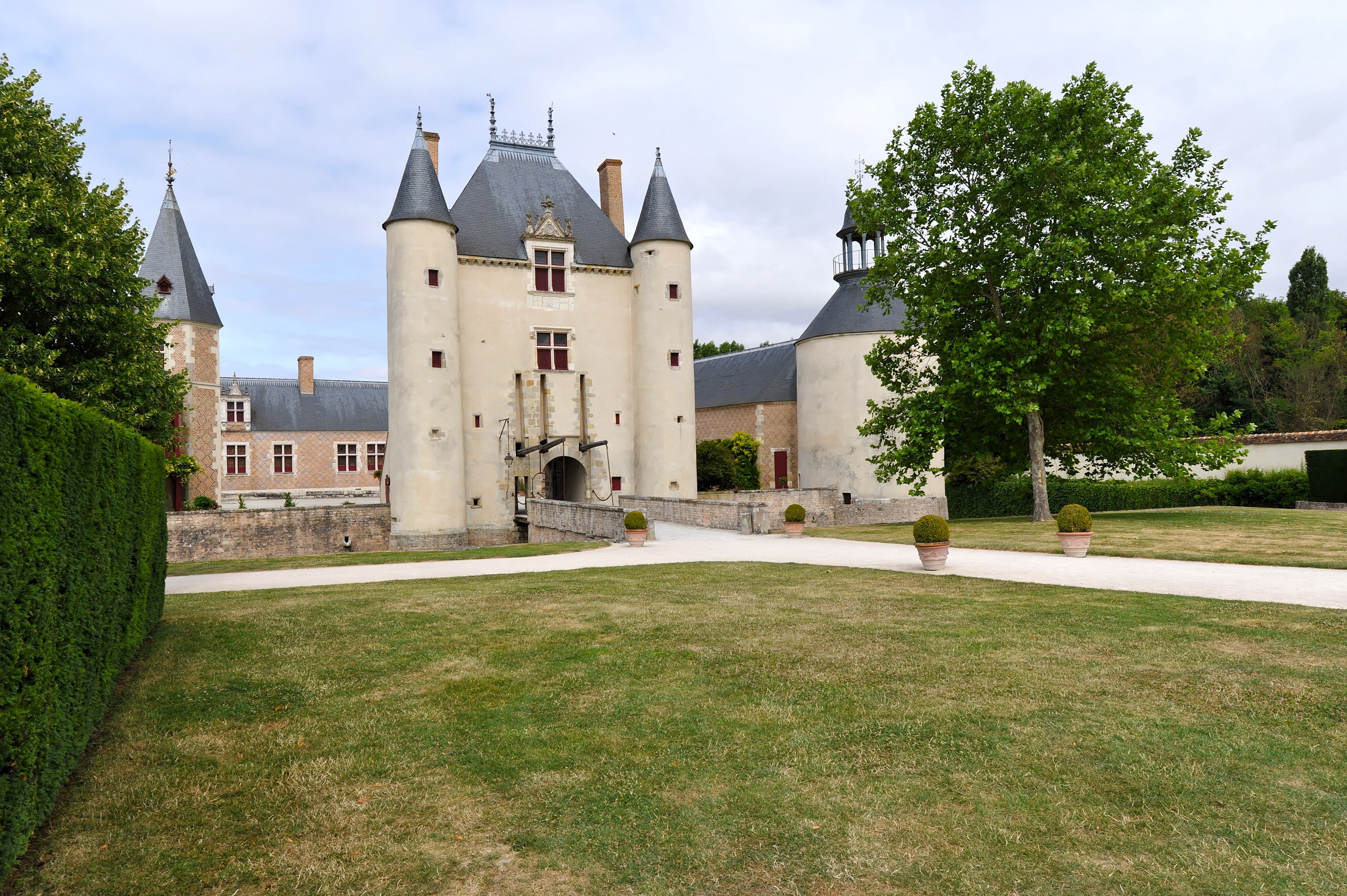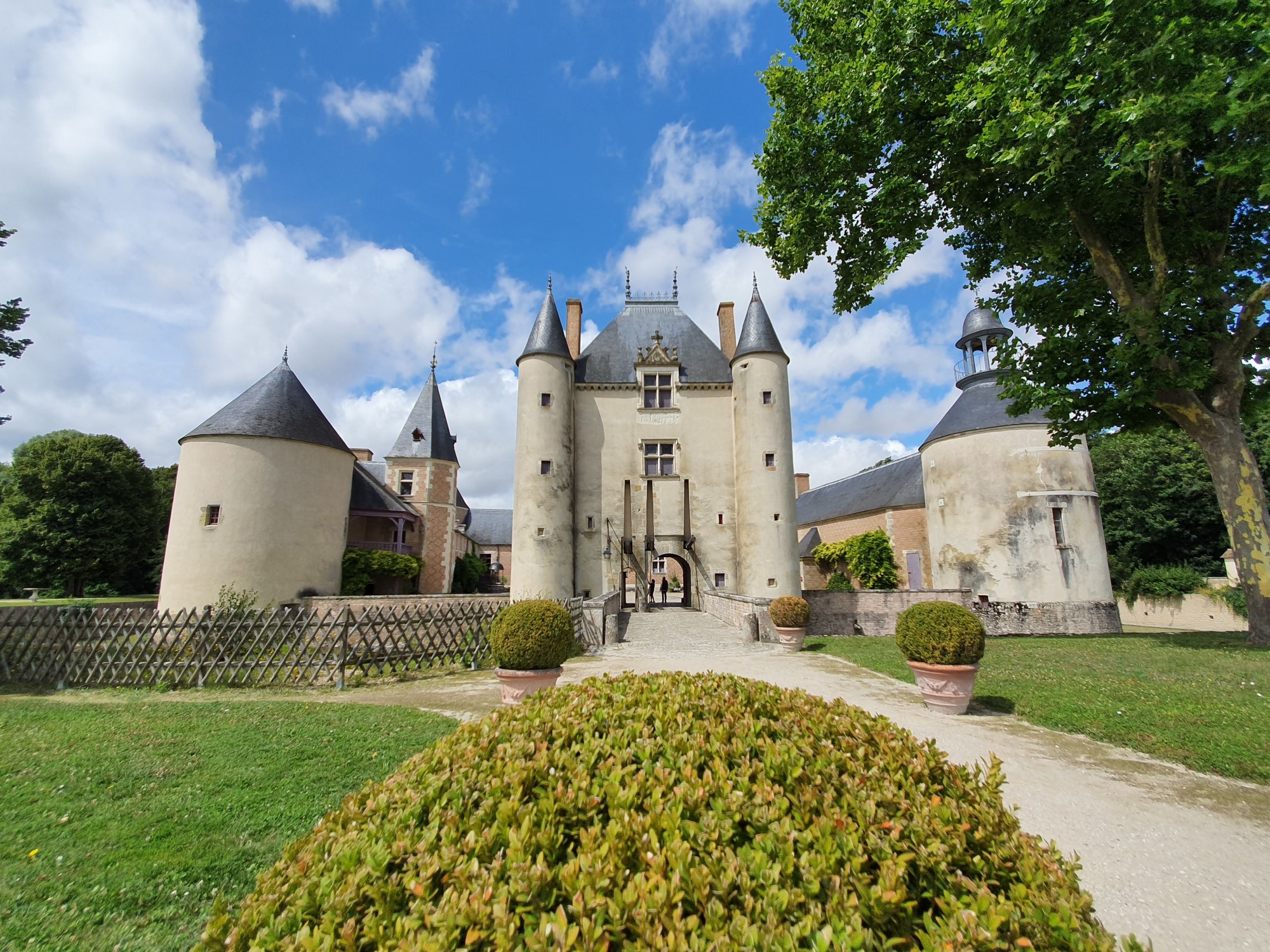The Château de Chamerolles, a magnificent example of French Renaissance architecture, is located in the quaint commune of Chilleurs-aux-Bois in the Loiret department, within the Centre-Val de Loire region. Known as one of the Loire Valley’s châteaux, this historic monument has been classified since 1927 and inscribed in 1988. The castle’s rich history and beautifully restored gardens make it a must-visit destination for history enthusiasts and nature lovers alike.

Geography: A Picturesque Setting
Nestled along the Route de Gallerand, the Château de Chamerolles is situated just 2.5 kilometers southeast of Chilleurs-aux-Bois and about 30 kilometers northeast of Orléans. The château is built on the banks of the Œuf River, at an altitude of 120 meters, within the natural region of the Orléans Forest. The GR32-655 Est hiking trail runs along the castle’s park, offering scenic views of the surrounding landscape. The commune of Chilleurs-aux-Bois is accessible via the Ulys bus network’s line 20A, and the A19 motorway’s exit 7 is just 6 kilometers north of the château.

History: From Medieval Fortress to Renaissance Masterpiece
The origins of the Château de Chamerolles date back to around 1530 when Lancelot I du Lac, chamberlain to King Louis XII of France and later bailiff of Orléans under King Francis I, built the château on the site of an older fortified house owned by the Brouard de Chamerolles family. While retaining the traditional form of a medieval fortress, the château was designed primarily as a residence, reflecting the architectural transition from feudal fortifications to Renaissance elegance.
In the 16th century, Lancelot II, grandson of Lancelot I, converted to Protestantism in 1562, making Chamerolles a significant site for the Reformation in the region. The château housed a Protestant chapel, becoming a focal point for the new faith. In 1672, the château passed into the hands of Jacques Saumery, brother-in-law of Jean-Baptiste Colbert, the powerful minister of King Louis XIV. Saumery held prestigious positions as governor of the Château de Chambord and the county of Blois, as well as marshal of the king’s armies and grand master of the forests and waters of Île-de-France.

During the 18th century, in 1774, the château was acquired by the Lambert family, and in 1924, it became the property of Gaston Jessé-Curély. The château endured significant damage during World War II and fell into disrepair. By 1970, it was put up for sale, and in 1976, the City of Paris assumed responsibility for the neglected estate.
In 1987, the General Council of Loiret purchased the dilapidated château and undertook an extensive five-year restoration project. Under the direction of Jacques Moulin, an architect for historical monuments, the château and its gardens were meticulously restored and opened to the public in 1992. The south wing now houses a unique perfume museum, featuring an impressive collection of artifacts that trace the history of fragrance and hygiene through the centuries. Didier Moulin was responsible for curating the museum’s exhibit on the art of perfume.

Architectural Description: A Blend of Medieval and Renaissance Styles
The Château de Chamerolles follows a classic layout, forming a quadrilateral with large cylindrical towers at each corner. The structure comprises four levels and features an imposing gatehouse on the eastern side, flanked by two turrets equipped with gun ports. The entire complex is surrounded by a moat, enhancing its defensive appearance.
The château is constructed from Beauce limestone coated with lime (seen in the gatehouse, south wing, and exterior facade of the north wing, as well as the northeast and southeast towers) and bricks (used in the northwest and southwest towers, the west wing, the gallery of the south wing, and the interior facade of the north wing). The red and black brick latticework on the facades is typical of the Loire Valley’s architectural style. The roofs are covered with slate.

The west wing of the château originally housed the lord’s residence during the Renaissance. The honor court is enclosed on three sides, featuring a well with an elegant dome and a Renaissance gallery. Although the courtyard’s elevation dates back to the 1530s, it was modified in the 17th and 18th centuries, preserving its Renaissance character.
The chapel retains original 16th-century paintings, and a 1991 restoration revealed elements of the Protestant occupation, including two wall texts reproducing the Creed and the Decalogue from the 1588 Geneva Bible.
Gardens and Park: A Renaissance Revival
Adjacent to the château, behind the eastern moat, lies a beautifully recreated Renaissance garden designed by Jacques Moulin during the château’s restoration. These gardens, inspired by late 16th-century French Renaissance styles, perfectly complement the château’s historic ambiance. To the south of the estate, a park with a river running through it offers a tranquil setting for visitors.
An additional highlight is the 17th-century market hall from Bellegarde, which was dismantled, restored, and reassembled within the château’s grounds. The hall was inaugurated on September 18, 2009, during the exhibition “Aux origines du Loiret, de la Préhistoire à l’A19.”

Conclusion
The Château de Chamerolles is a remarkable blend of medieval strength and Renaissance elegance. Its rich history, from its Protestant heritage to its recent restoration, makes it a unique and compelling destination. Visitors to the château can explore its beautifully furnished rooms, stroll through the Renaissance gardens, and immerse themselves in the history of perfume at the museum. Whether you’re a history buff, architecture enthusiast, or nature lover, the Château de Chamerolles offers a captivating glimpse into France’s past.

